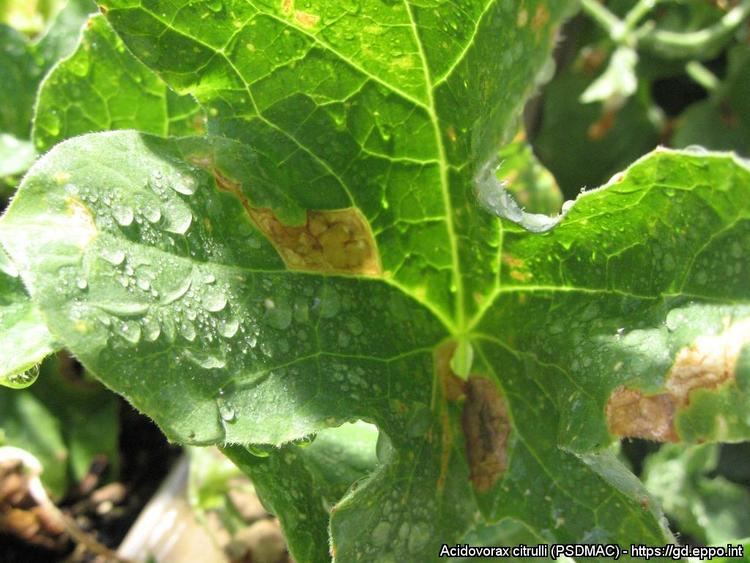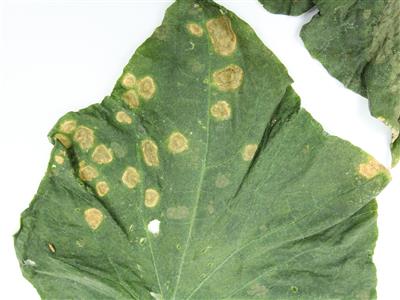
Angular Spot
WHAT IT IS AND HOW TO ELIMINATE
Cucurbitáceas piel NO comestible
Angular Spot
Pseudomonas Syringae Pv. Lachrymans
Pathogen:
Bacterium
Type:
Risk to the plant:
HIGH
Bacteriosis

WHO CAUSES IT?
Pseudomonas syringae, known as angular spot, is a phytopathogenic bacteria that affects a wide range of plants, including cucurbits. It is an opportunistic pathogen that can survive and multiply in conditions of humidity and moderate temperatures. This bacteria is capable of penetrating plant tissues through natural wounds or wounds caused by insects or other stress factors. Once inside the plant, Pseudomonas syringae multiplies and causes damage, resulting in the appearance of characteristic symptoms on the leaves, stems and fruits.
SYMPTOMS
The disease caused by Pseudomonas syringae in cucurbits is known as angular spot. Symptoms include the formation of dark brown or blackish triangle-shaped Taches on the leaves, with an angular appearance that follows the edges of the tissues. These Taches can expand rapidly and cause tissue necrosis, leading to defoliation and weakening of the plant.


DEVELOPMENT CONDITIONS
Temperature:
15°C - 25°C
Humidity:
60% - 80%
HOW IS IT SPREAD?
Irrigation water, rain, direct contact between plants, cultivation equipment.
HOW TO ELIMINATE IT?
Home treatments
Natural allies
There are no natural allies
Chemical treatments
There are no treatments for this disease. Treatments are directed at the insect vectors that transmit it. See insect treatments.
RECOMMENDED PRODUCTS TO ELIMINATE THE PEST
REPELLENT PLANTS
-
RECOMMENDATIONS
- Avoid wetting the leaves when watering, do it directly to the ground.
- Removes diseased parts and plant remains from the soil.
- Always use clean and disinfected tools.
- Do not handle plants when they are wet.
- Improves ventilation between plants to reduce humidity.
- You can use copper-based treatments as a preventative.

























